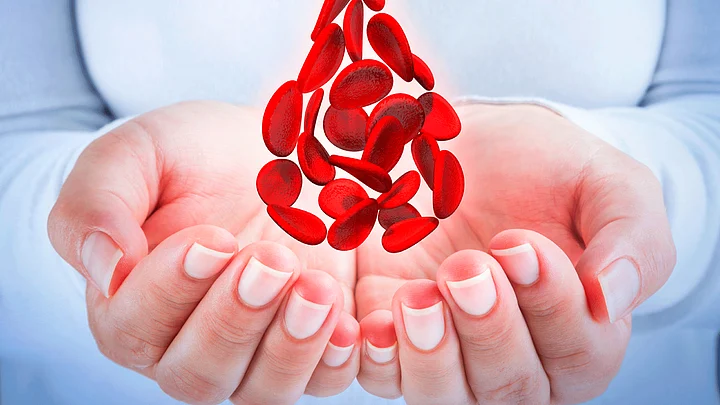Paper cuts.
Experienced them?
The perfect amalgamation of pure horror, agony and disbelief. A bl***y paper gives you a jagged wound, injuring the most sensitive nerve cells.
But this incredible misery for you (pardon the exaggeration) can result in endless hours of oozing blood, injections, and even RIP for about one lakh Indians living with a rare blood disorder, haemophilia.
Normally when healthy people bleed, substances called clotting ‘factors’ in the blood combine with platelets to make the blood sticky and eventually the bleeding stops.
India with nearly two lakh cases is estimated to have the second highest number of patients with haemophilia, a lifelong bleeding disorder that prevents blood from clotting, doctors said ahead of the World Haemophilia day on April 17.
Approximately one in 10,000 Indians suffer from haemophilia, and yet, there is no comprehensive public health intervention to prevent or control the genetic disorder, and there is absolutely no national policy on this disease.
Scroll below to find out more on this complicated disease and why India needs to give it special attention urgently.
1. There Is No Cure, Treatment Is Expensive, Subsidised In Only Major Cities
When a haemophiliac is injured, shots of factor 8 or 9 need to be given immediately which will help their bodies synthesise blood.
The only relief is that in some states, the Haemophilia Society’s run primarily on donations and government grants provide subsidised, sometimes free of cost factor shots in two-tier cities, but they run out of funds for long periods and are completely absent in smaller towns and villages in most parts of India.
2. Joint Damage & Disability
A study conducted in India found that only 9 out of 148 haemophilia patients did not have a disability. Most of these patients were young boys from socio-economically weaker sections of society.
3. Haemophilia Affects Mostly Men – Traditionally the Bread Winners of the Family
There are two types of haemophilia caused by a problem in one of the genes on the X chromosome (factor 8 or factor 9) that tell the body to make the clotting factor proteins needed to form a blood clot.
Males have one X and one Y chromosome (XY), and females have two X chromosomes (XX).
Remember school biology classes?
Girls get the X chromosome from their dads while boys get it from their mothers. Now even if girls get the haemophilia-stricken-chromosome from their dads, since they have two XX, the healthy one dominates. But they can still be carriers of the disease –experience heavy periods and bleeding, but the severity of the disorder is not so pronounced.
Boys have only one X chromosome, if it is missing the factor 8 or 9, they pretty much have to bear the emotional and physical trauma of getting injected with factors for the rest of their life.
(This article is re-published from FIT’s archives on the occasion of World Haemophilia Day, originally published on 17 April 2016.)

